Bigfin Squid Makes A Stunning Appearance In Tonga Trench – Meet The Magnapinna
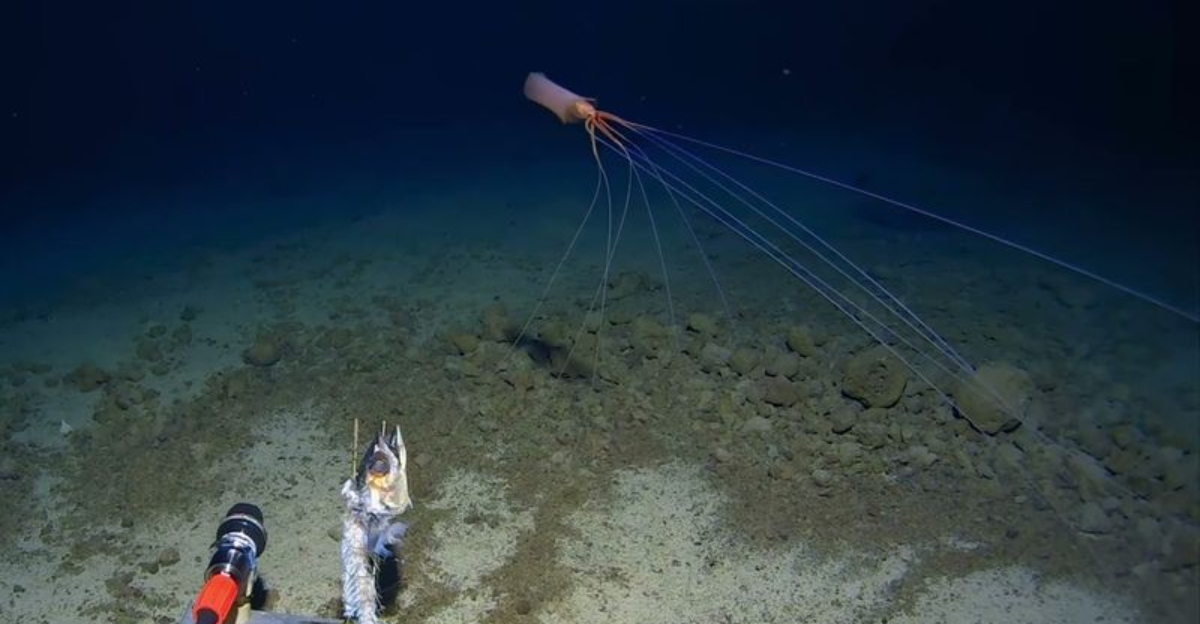
Scientists recently spotted one of the ocean’s most mysterious creatures in the Tonga Trench – the elusive bigfin squid.
These deep-sea phantoms have long arms that stretch out like spooky elbows, making them look like something from another planet.
With fewer than 20 confirmed sightings worldwide, these rare cephalopods continue to fascinate marine biologists and ocean explorers alike.
1. Ghost Of The Deep
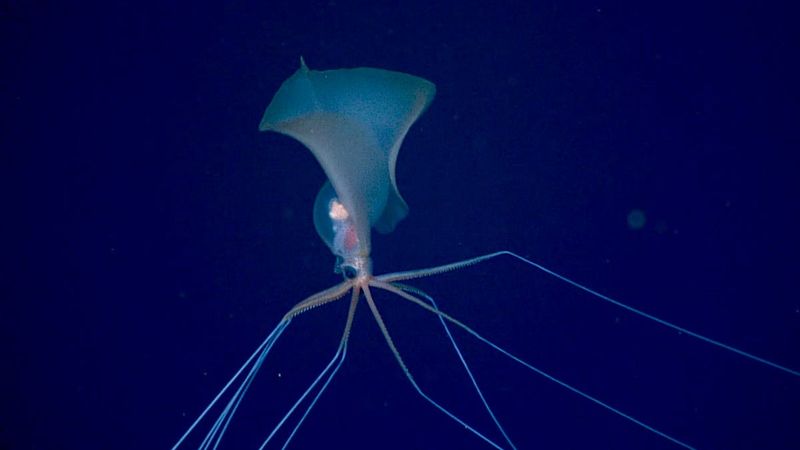
The bigfin squid earned its ghostly reputation from its pale, almost translucent body that seems to materialize out of the darkness. When it was spotted in the Tonga Trench, researchers initially thought they were looking at some kind of underwater debris!
These creatures hover nearly motionless in the water, with their arms and tentacles dangling below like strange puppet strings. Their ethereal appearance has spooked even seasoned deep-sea explorers who’ve spent decades beneath the waves.
Some scientists believe their ghost-like appearance helps them blend into the midnight-black waters of the deep ocean, making them nearly invisible to both predators and prey.
2. Bizarre Elbow Arms
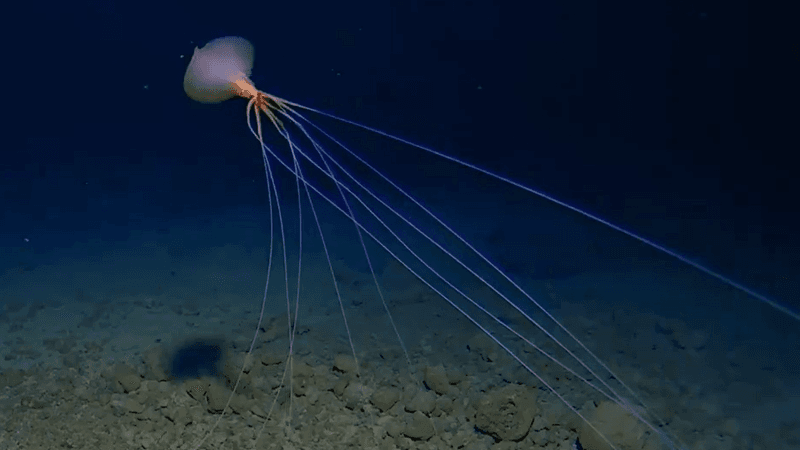
Unlike any other squid on Earth, the bigfin’s arms bend at sharp angles, creating what looks like elbows. These peculiar appendages can stretch up to 26 feet long – that’s longer than a school bus! When fully extended, they form an odd umbrella-like shape beneath the squid’s body.
Scientists aren’t entirely sure why they evolved this unique feature. One theory suggests the elbow configuration helps them trap food more efficiently in the sparse deep-sea environment.
The arms contain special sticky cells that might catch tiny particles floating by, turning the squid into a living fishing net for microscopic meals.
3. The Tonga Trench Discovery
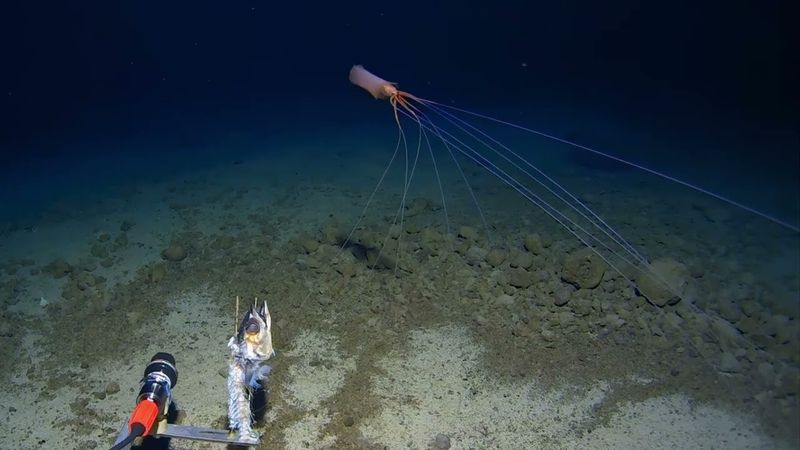
The recent Tonga Trench sighting marks only the third time a bigfin squid has been documented in the South Pacific. Located near the island nation of Tonga, this underwater canyon plunges over 35,000 feet deep – one of the deepest places on Earth!
A research vessel using a remote-operated vehicle (ROV) captured stunning 4K footage of the creature at approximately 10,000 feet below the surface. The team wasn’t even looking for marine life but was studying underwater volcanic activity when the squid drifted into view.
The unexpected encounter lasted nearly 10 minutes before the mysterious visitor disappeared back into the darkness.
4. Living Fossil Mystery
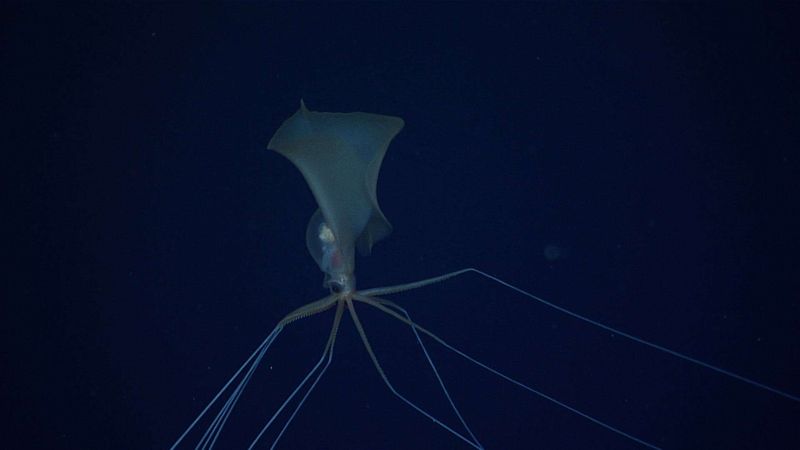
Marine biologists call the bigfin squid a “living fossil” because it appears to have changed very little over millions of years. Fossilized remains showing similar body structures date back to the Jurassic period – when dinosaurs ruled the land!
The squid’s primitive features suggest it evolved early in cephalopod history and found its deep-sea niche where environmental pressures remained relatively constant. Their unusual body plan works so well in the deep ocean that natural selection hasn’t pushed for major changes.
Studying these living time capsules helps scientists understand how life adapts to extreme environments and provides clues about ancient ocean ecosystems.
5. Size Surprise
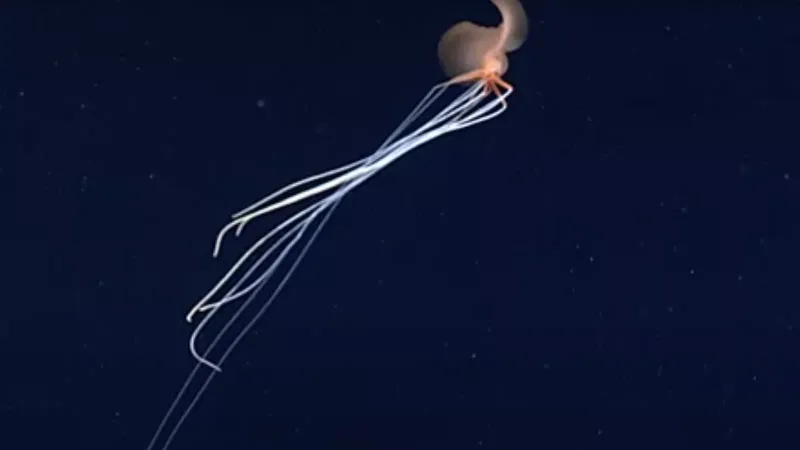
Most people picture giant squids when thinking of deep-sea cephalopods, but the bigfin’s body is surprisingly small – typically just 6 inches long! What makes them remarkable is the extreme length-to-body ratio of their appendages.
If humans had the same proportions, our arms would be over 60 feet long! The Tonga Trench specimen was estimated to have a total arm span of about 20 feet while its main body was barely the size of a soda can.
This unusual body plan likely helps them survive in the deep sea where food is scarce, allowing them to cover massive areas with minimal energy expenditure.
6. Extreme Depth Champions
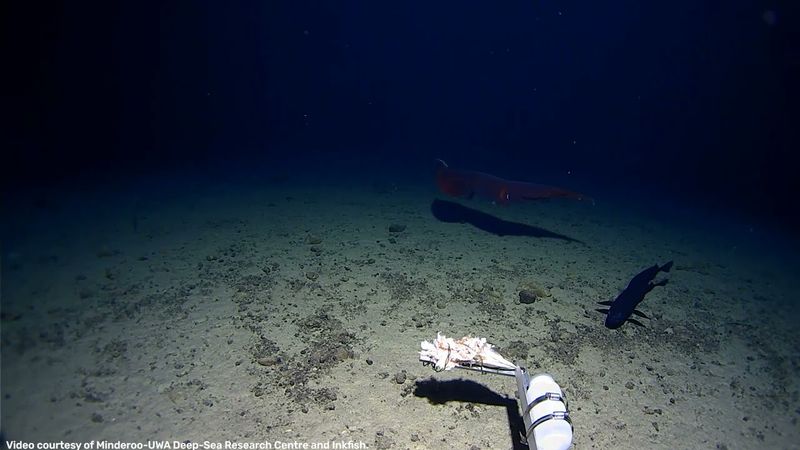
Bigfin squids are true champions of the deep, thriving in the crushing pressure of the ocean’s hadal zone – depths below 20,000 feet! At these extreme depths, the pressure exceeds 8 tons per square inch – like having 50 jumbo jets stacked on top of you.
Their bodies contain special pressure-resistant proteins and flexible tissues that prevent them from being crushed. The Tonga Trench specimen was spotted at a relatively shallow 10,000 feet, suggesting they might migrate vertically through different ocean layers.
Only specialized deep-sea vehicles with titanium hulls can reach these depths, making bigfin research incredibly challenging and expensive.
7. Feeding Remains A Mystery
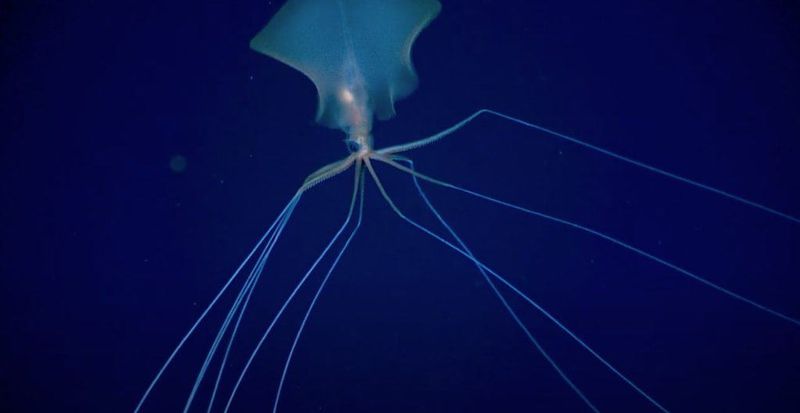
Nobody has ever observed a bigfin squid eating! Their feeding habits remain one of the ocean’s greatest unsolved mysteries. The unusual elbow-bent posture of their arms suggests they might use a unique hunting strategy unlike any other squid.
Scientists believe they might be “sit-and-wait” predators, hanging motionless with their arms extended to create a living trap. When tiny creatures bump into their sticky tentacles, they’re caught like flies on flypaper.
Another theory suggests they might be filter feeders, collecting marine snow – tiny particles of organic matter that constantly fall from upper ocean layers like an underwater snowstorm.
8. Bioluminescent Light Show
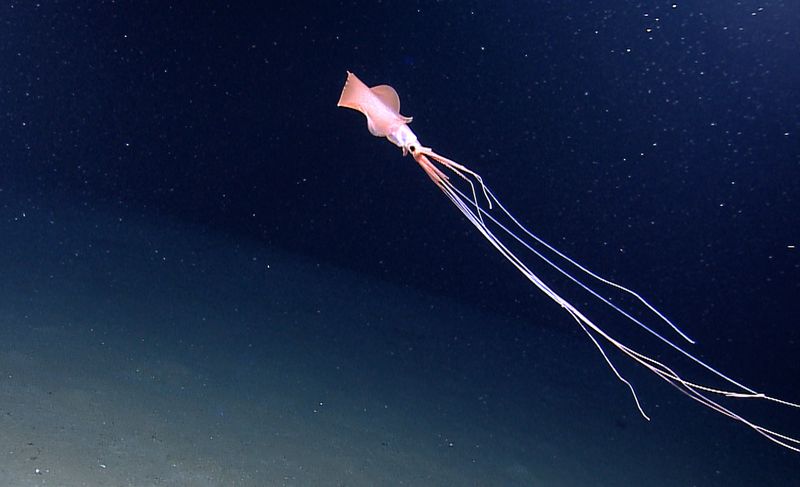
The Tonga Trench discovery revealed something extraordinary – bigfin squids can produce their own light! Specialized cells called photophores dotted along their arms create faint bluish pulses that might be used for communication or attracting prey.
In the pitch-black deep sea, even the faintest light can be seen from considerable distances. Researchers observed the squid flashing complex patterns, almost like an underwater Morse code. Each arm segment appeared capable of lighting up independently, creating mesmerizing sequences.
This bioluminescent ability might explain why these creatures have remained so elusive – they can simply turn off their lights when larger predators approach!
9. Rare Scientific Specimens
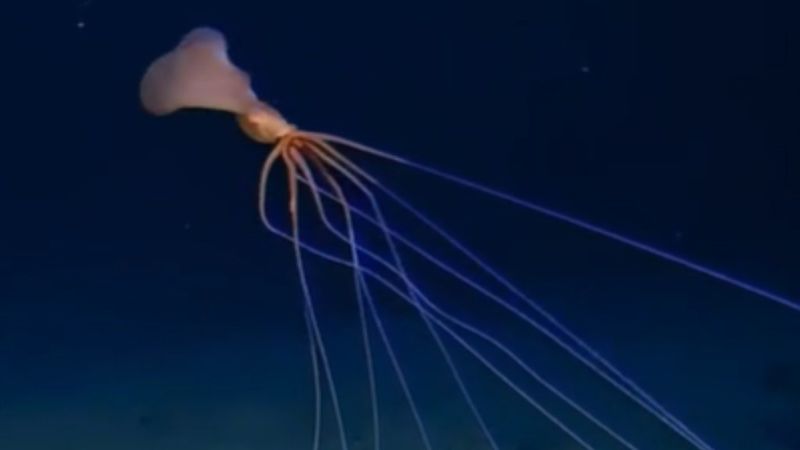
With fewer than 20 confirmed sightings worldwide, bigfin squids are among the least-studied large animals on Earth. No intact specimen has ever been captured for laboratory analysis – all we know comes from video footage and a few partial remains found in predator stomachs!
The Tonga Trench observation is particularly valuable because it provided the clearest video evidence yet of their swimming behavior. Previous sightings were often brief glimpses or blurry images that left scientists with more questions than answers.
Some researchers have jokingly called bigfins the “unicorns of the deep” because of how difficult they are to find and study.
10. Family Tree Puzzle
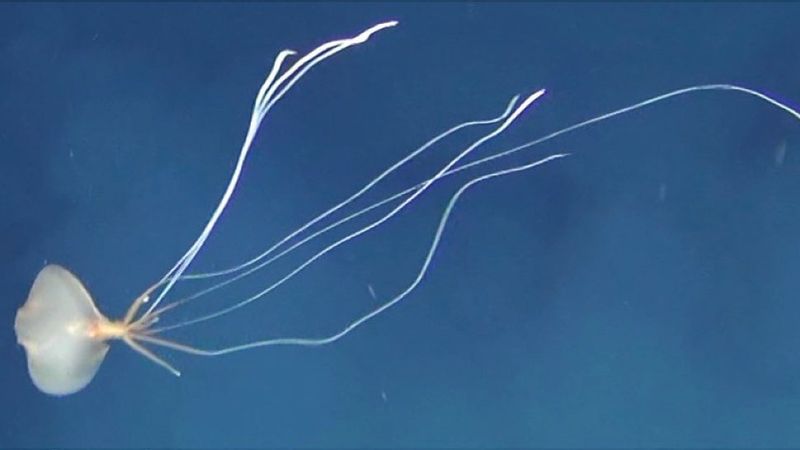
Where exactly bigfin squids fit on the cephalopod family tree remains hotly debated among marine biologists. DNA analysis from tissue fragments suggests they represent their own ancient lineage that split from other squids over 100 million years ago!
Their unique features don’t quite match any other squid family. Scientists created an entirely new classification – Magnapinnidae – just for them. Some researchers believe they might be more closely related to vampire squids than to modern squids.
Understanding their evolutionary relationships could provide valuable insights into how different cephalopod groups adapted to various ocean environments throughout Earth’s history.
11. Global Deep-Sea Residents
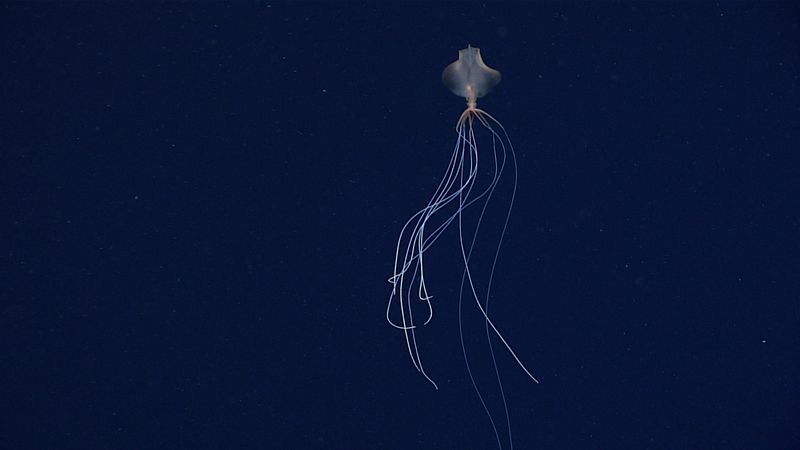
Contrary to popular belief, bigfin squids aren’t confined to a single ocean region – they appear to have a worldwide distribution in deep waters! Sightings have occurred in the Gulf of Mexico, off the coast of Brazil, near Japan, and now in the South Pacific’s Tonga Trench.
This global presence suggests they’ve mastered life in the deep sea across different oceanic conditions. Their wide distribution is particularly impressive considering how rarely they’re spotted.
Scientists now believe they might be relatively common in the deep ocean but simply live beyond the reach of most research equipment. The true population size remains completely unknown.
12. Climate Change Concerns
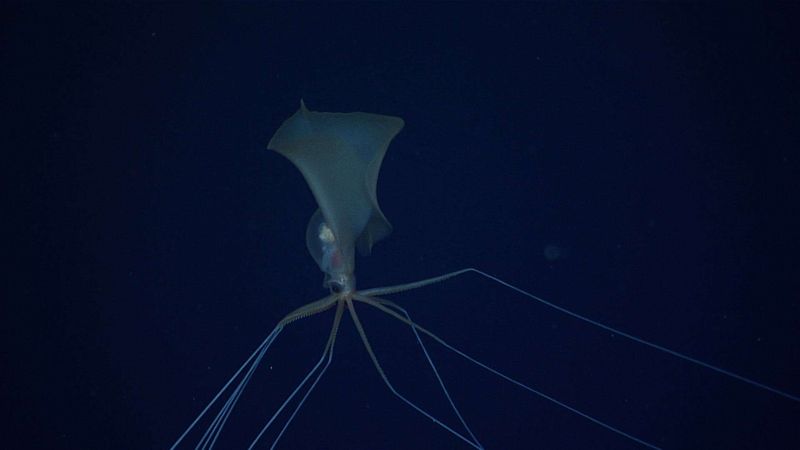
The fragile deep-sea habitat of bigfin squids faces unprecedented threats from climate change. As oceans warm and acidify, deep-water chemistry is changing faster than these ancient creatures might be able to adapt.
Increasing temperatures affect oxygen levels in the deep sea, potentially shrinking the habitable zone for these specialized animals. The Tonga Trench discovery has sparked urgent calls for more deep-ocean research and protection.
Some scientists worry we might lose these remarkable animals before we’ve had the chance to fully understand them. Their unique adaptations could hold valuable secrets for biotechnology and medicine that would be lost forever.






